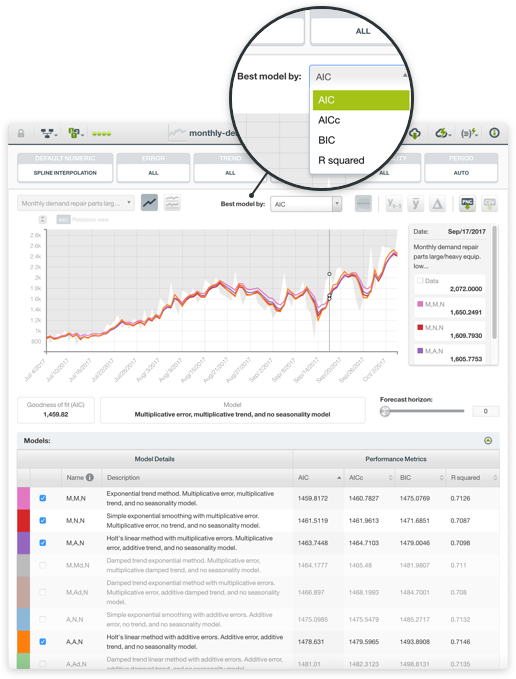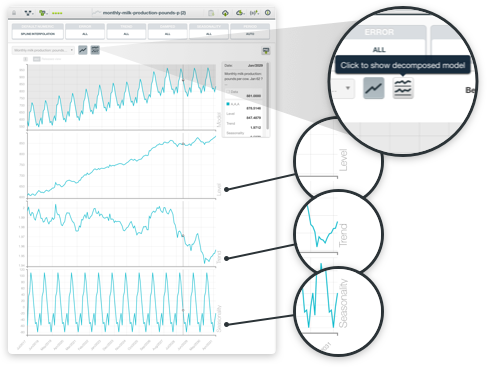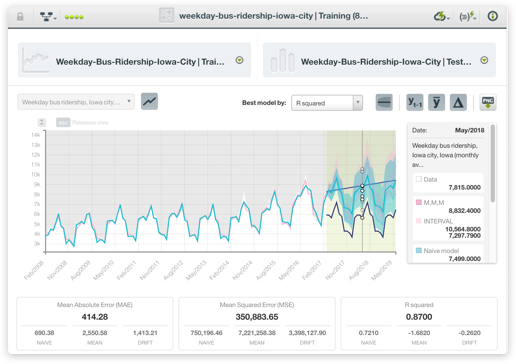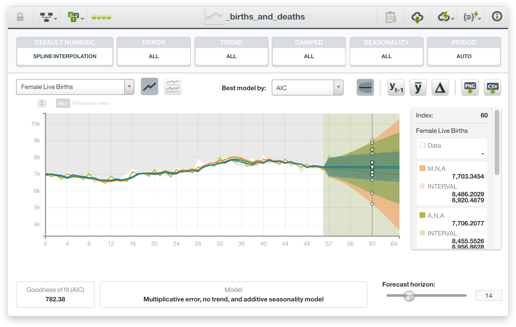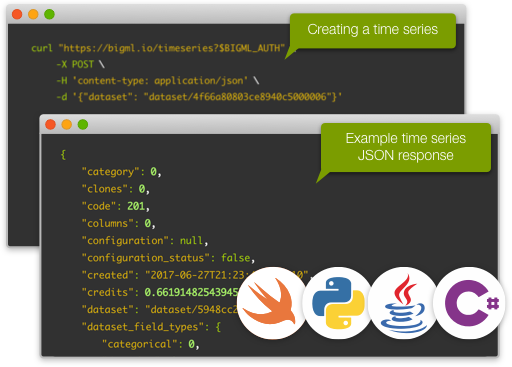Best-in-class algorithm
You can create time series with a dataset containing one or more numeric fields with time series data. By Default, BigML Time Series replace missing values using spline interpolation. Under the hood, BigML Time Series implements exponential smoothing methods. The smoothing parameters assign exponentially increasing weights to more recent instances. Time series data is modeled as a level component and it can optionally include a trend (damped or not damped) and a seasonality components. Both trend and seasonality components have two variations: additive or multiplicative. The additive variation of trend uses Holt's linear method as the trend growth is assumed to be linear whereas the forecast equation with multiplicative trend uses exponential trend method, i.e., it contains is a constant growth rate that is multiplied by the level component. Because most real world trend models aren't repeated indefinitely you can "dampen" the trend to a flat line if forecasting a long time horizon. Together, the trend, the seasonality and the error components and their variations yield up to 19 automatically generated models as you create a BigML Time Series, which results in significant time savings.
Each model learned from the training data, BigML provides a set of performance metrics: AIC (Akaike's Information Criterion) measures the trade-off between the goodness-of-fit and the model's complexity; AICc (Corrected Akaike's Information Criterion) introduces a correction element that is useful for smaller datasets; BIC (Schwarz Bayesian Information Criterion) is akin to AIC, but it penalizes the model's complexity more heavily; and finally, R squared measures the model's errors compared to the objective fields' actual values that mimic a benchmark model that always predicts the mean.


